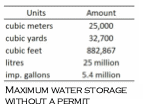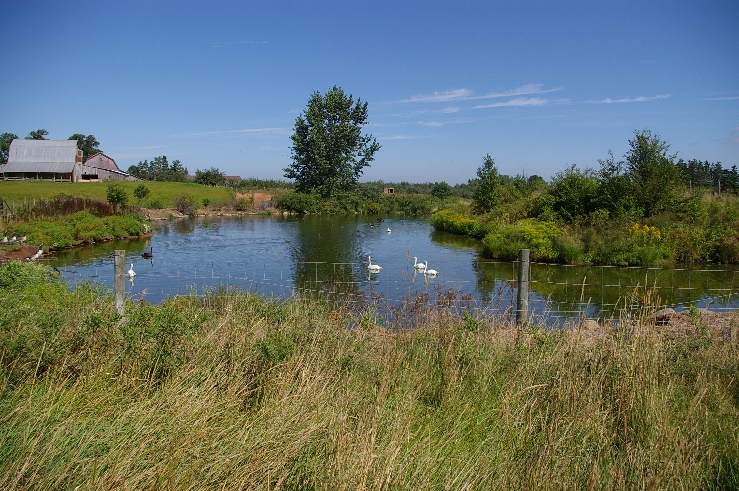The Nova Scotia Department of Agriculture recently announced enhanced funding for the Sustainable Agricultural Water Supply section in the Soil and Water Sustainability program. This helps fund wells and pond construction, spring development, cistern installation and hook-ups to municipal pipelines. The assistance has been increased from 25% to 60% to a maximum of $10,000. The intake period for these projects (Sustainable Agricultural Water Supply section only) has been extended until Dec 1, 2020.
Well Construction
If you are interested in a new well for the farm and are debating between a drilled or dug well, there are advantages and disadvantages to each type of construction. Drilled wells can provide a more consistent supply of potable water, but are more expensive to construct and flow rates and mineral levels can be issues in many areas around the province. Dug wells are cheaper to construct, but can run dry during dry periods of the growing season when water is needed the most. Bacteria issues are also common with dug wells and a water treatment system (i.e. UV light) would be recommended.
It would be a good idea to contact a local well driller to discuss the potential of well development in your area as their previous experience will provide an indication as to the potential for a new well. A searchable list of currently certified well drillers and diggers is available on the Nova Scotia Environment (NSE) website at: http://www.novascotia.ca/nse/cms/Search.asp.
NSE also provides an online Well Logs Database: http://novascotia.ca/nse/groundwater/welldatabase.asp that can provide valuable information when deciding if a drilled well is a good choice for the farm. Existing wells within a community can be searched and provide information related to well depths and yields. By reviewing other wells in your area, some indication as to the consistency or variability of water supply that can be expected with a newly constructed well can be gained.
Pond Construction

When planning to construct a pond on your property, there are a few considerations to keep in mind. A Nova Scotia Environment (NSE) approval is only required for water storage that exceeds 25,000 m3 (for scale, 25,000 m3 is equivalent to a two-acre pond that is 10 ft deep) or if wetlands or watercourses will be impacted during construction. If you would like assistance assessing your pond location, contact Cory (croberts@nsfa-fane.ca) or Trevor (tdavison@nsfa-fane.ca) at the EFP office.
Run-off from prolonged rainfall or heavy storms can flood a pond quickly. An important consideration is a good-sized overflow or spillway. Spillway design is one aspect of pond construction where professional assistance may be beneficial, however overflows work best if kept simple. Culverts through the front of an embankment, or tubular risers extending from the water surface to a drain running through the base of a dam, may leak around the edges, get plugged, or be too small to handle floods. The alternative is to place a spillway at a low point in the embankment, so excess water flows over and down the side of the pond. A liner made of waterproof geotextile should be used to prevent erosion, with rip-rap, or armor rock, placed on the liner to break the force of the water. Whenever possible, overflows should spill onto the natural gradient where the soil is well-sodded, rather than onto an artificial embankment where the soil may be more prone to erosion. An emergency spillway, set slightly higher than the main one, should also be considered as a backup.




